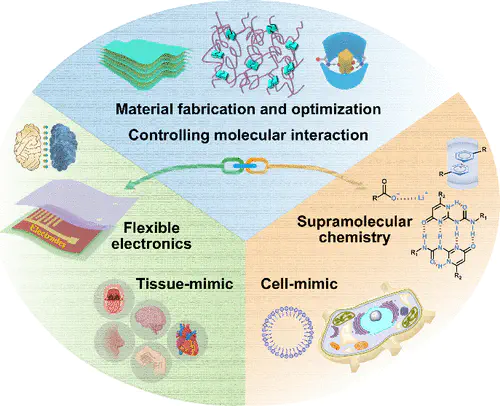Advancing flexible sensors through on-demand regulation of supramolecular nanostructures
 Image credit: ACS
Image credit: ACSAbstract
The evolution of flexible sensors heavily relies on advances in soft-material design and sensing mechanisms. Supramolecular chemistry offers a powerful toolbox for manipulating nanoscale and molecular structures within soft materials, thus fostering recent advancements in flexible sensors and electronics. Supramolecular interactions have been utilized to nanoengineer functional sensing materials or construct chemical sensors with lower cost and broader targets. In this perspective, we will highlight the use of supramolecular interactions to regulate and optimize nanostructures within functional soft materials and illustrate their importance in expanding the nanocavities of bioreceptors for chemical sensing. Overall, a bridge between tissue-mimicking flexible sensors and cell-mimetic supramolecular chemistry has been built, which will further advance human healthcare innovation.